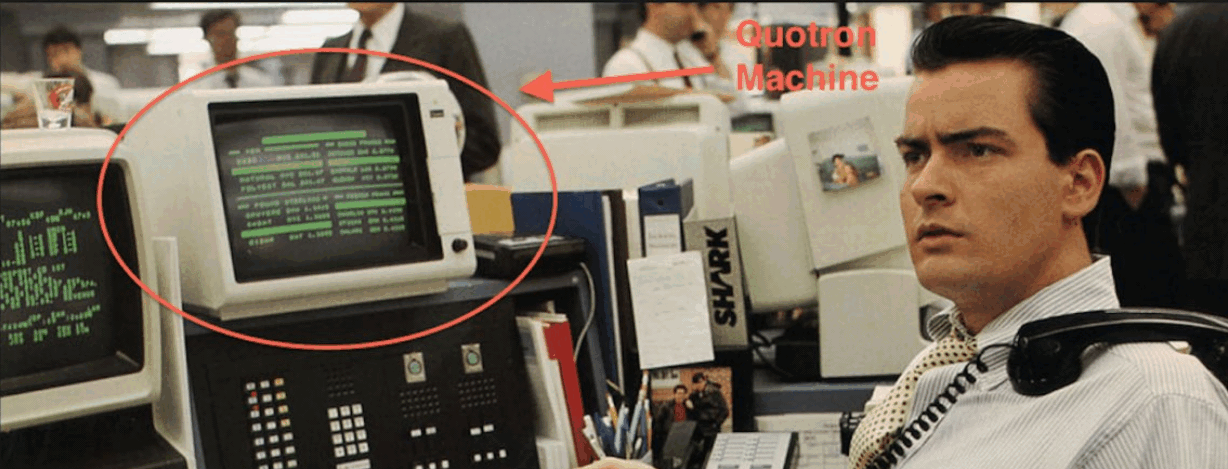Search the Site
About Us
Guy has provided excellent technical analysis related to individual stocks and industry groups in the Magellan Fund. He has not only published timely and reliable buy/sell recommendations, he has been particularly adept at identifying major industry moves i.e. consumer stocks outperforming cyclicals, NASDAQ outperforming NYSE, etc. Guy seems to have developed a very good knack to spot and ride major trends.
Guy has been an important analytic contributor to myself (as well as other Fidelity portfolio managers) and Magellan Fund.
- Jeffrey Vinik of the Magellan Fund at Fidelity Investments
I was aided in this effort by Fidelity computer whizzes Guy Cerundolo…
- Peter Lynch, Author and Magellan Fund Manager at Fidelity Investments
My introduction to Technical Analysis began in 1986 as a Finance Major at Northeastern University in Boston, Massachusetts where I served as the Vice President of the Investment Club. Walter Stone of Stone & Mead, a boutique financial services firm, inspired me to learn how to apply technical analysis when managing a small fund.
Technical analysis was only covered in one small chapter in my futures and options class, so it was exciting to learn about this financial tool. I was captivated when Mr. Stone reviewed a number of technical patterns or discussed trend analysis and I knew I wanted more.
After the presentation, I thanked Mr. Stone for his time then made the game-changing decision to skip my next class. I followed Mr. Stone to the train and humbly approached him, sharing that I thoroughly enjoyed his presentation and wanted to learn more. I boldly went on to ask if I could work for him and his firm. He paused, smiled and said, “Unfortunately, we are a very small company of two partners and one assistant, we can’t afford to bring someone onboard.” To this, I replied, “I will work for free.” Walter was surprised, handed me his card and said, “Call me on Monday”.

My journey into technical analysis started when I walked through the doors at Stone & Mead and lasted a little over two years. As a newcomer I manually updated a portfolio of stock charts, getting the data from a Quotron machine. Working with Mr. Stone, now Walter, was an immense pleasure. I had much to learn and he was a tremendous mentor. Although my friends thought I was crazy to work for no pay, aside from morning coffee, the occasional lunch, and book for Christmas, Technical Analysis of Stock Trends by Edward & Magee, I did hold a part-time job to pay the bills. But, it became quickly apparent to me that my experience with Stone & Mead would become the foundation of my career.
In early 1989, I found a job posting for a position at Fidelity Investments as a Technical Research Assistant. I showed Walter and he encouraged me to go for it, saying, “Fidelity is a great company, and they have a War Room containing hundreds of charts covering many global financial markets”. I didn’t hesitate and rapidly typed up and delivered my resume to the hiring manager’s office. I received an invitation to interview and brought along my portfolio of charts that I had been meticulously posting. They were impressed and one week later I was hired and spent the next 13 years working with some of the best and well-known portfolio managers in the industry.
Fortunate to work with the industries best and brightest, Jeffrey Vinik who ran the Magellan Fund and later left in 1996 to start his successful hedge fund, was a close colleague and mentor. Peter Lynch referenced my analysis in many of his speeches and books as well as gave me recognition for my work in his book, “Beating the Street”, which was a pleasant surprise. Quotes from these industry frontrunners as to my technical analysis and performance can be found above.
Working at Fidelity is where things opened up for my career. I was exposed to technical research reports from analysts around the world and had a number of resources at my disposal such as four computers and one Sparc workstation to do my research and publish investment research. I created and worked with tools that were unique from other technical analysts. This came about as I walked the halls talking to portfolio managers about stock breakouts that I was discovering.
Most of the managers that I worked with were running anywhere from 20 to 60+ Billion dollars. They were moving battleships in a harbor, and the breakouts I was showing them were “good ideas” but too late for them to start a position to make it meaningful in their portfolio. I was told, “If you can get me in earlier, that would be great”.
It took me eight years, but I was able to work with and cultivate a money flow model that enabled me to capture the first innings of an asset turn. This model has been used ever since with only slight modifications over time. I also used these tools, among others, to co-manage a technical portfolio that our team ran as well as co-managed the “Super Select Fund’ that my then manager was incubating.
From Fidelity, I had an opportunity to work at two hedge funds in the Boston area, each run by former Fidelity colleagues. Here I performed technical analysis on long and long-short portfolios. After four years, I joined Wellington Management. There I spent the next ten years working alongside several excellent portfolio managers, analysts, and technical analysts. Our team ran both long and long-short portfolios and wrote key research for the firm. In 2016 I decided to strike out on my own.
It is exciting to apply my diverse 30-year experience and expertise to provide investors with my proven and unique form of technical analysis. Clients in the early innings include some of Boston’s largest investment firms. You can count on me to systematically capture positive returns from global stocks, currencies, and commodities regardless of market direction.






